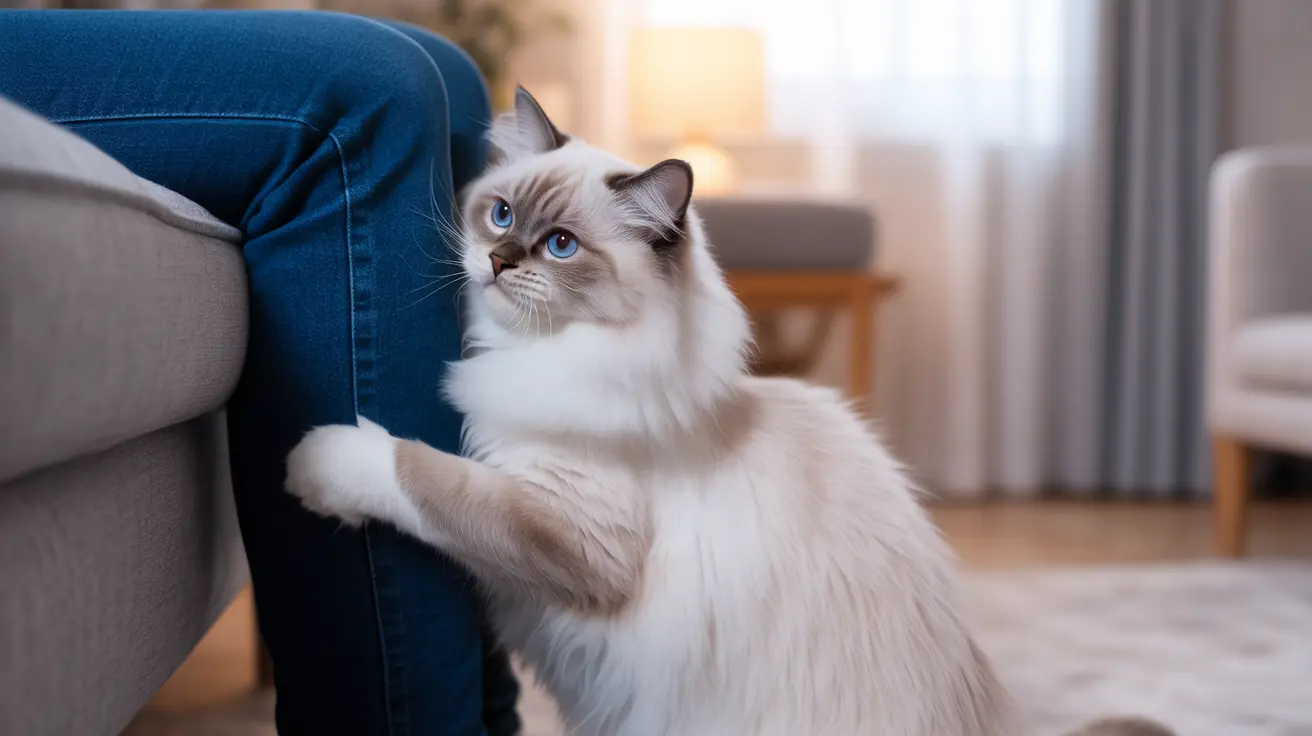The Science Behind Cat Headbutting
Cats have specialized scent glands located on their foreheads, cheeks, and chin. When they headbutt or rub against you, they're actually releasing pheromones – chemical signals that other cats can detect. These pheromones serve as a form of communication and territorial marking.
This behavior isn't just about leaving their scent; it's also a sign of trust and affection. When a cat deliberately brings their head close to yours, they're putting themselves in a potentially vulnerable position, demonstrating their complete comfort with you.
Social Bonding and Communication
Headbutting plays a crucial role in feline social structures, both in domestic settings and in the wild. Mother cats use gentle head bumps to guide and reassure their kittens, establishing this behavior as a fundamental form of positive communication from an early age.
In multi-cat households, you might notice cats headbutting each other as part of their greeting ritual. This behavior helps establish and maintain social bonds within their group, creating a shared community scent that marks all members as part of the same family.
Health and Behavioral Implications
While headbutting is generally a positive behavior, changes in its frequency or intensity can sometimes indicate underlying issues. A sudden increase in headbutting might signal anxiety or stress, particularly during environmental changes like moving to a new home or introducing a new pet.
Conversely, if a typically affectionate cat suddenly stops headbutting, it could indicate illness or discomfort. Always monitor changes in your cat's behavior and consult a veterinarian if you notice significant variations from their normal patterns.
How to Respond to Cat Headbutting
When your cat headbutts you, they're initiating a social interaction and showing trust. Responding appropriately can strengthen your bond. Gentle petting, soft words, or simply acknowledging their gesture can reinforce this positive behavior.
However, it's important to let your cat lead these interactions. Forcing physical contact or responding too enthusiastically might make them uncomfortable and discourage future displays of affection.
Frequently Asked Questions
Why do cats headbutt their owners and what does this behavior mean?
Cats headbutt their owners primarily to show affection, trust, and to mark them as part of their social group through scent marking. This behavior indicates that your cat feels safe and bonded with you.
How does cat headbutting relate to scent marking and territory?
When cats headbutt, they release pheromones from scent glands in their head area. This marks their territory and creates a familiar scent profile that helps them feel secure in their environment.
Can excessive or sudden headbutting indicate stress or health problems in cats?
Yes, sudden changes in headbutting frequency might indicate stress, anxiety, or health issues. If you notice significant behavioral changes, consult your veterinarian.
What are the best ways to respond when a cat headbutts me?
Respond with gentle attention, such as light petting or quiet words of acknowledgment. Allow the cat to control the interaction's duration and intensity.
Why do some cats headbutt furniture or walls instead of people?
Cats headbutt furniture and walls to mark their territory with their scent, creating a familiar environment that feels safe and secure to them. This is normal territorial behavior.
Conclusion
Cat headbutting is a complex behavior that combines social bonding, territorial marking, and emotional expression. By understanding and appropriately responding to this behavior, you can build a stronger relationship with your feline companion while ensuring their emotional needs are met.






